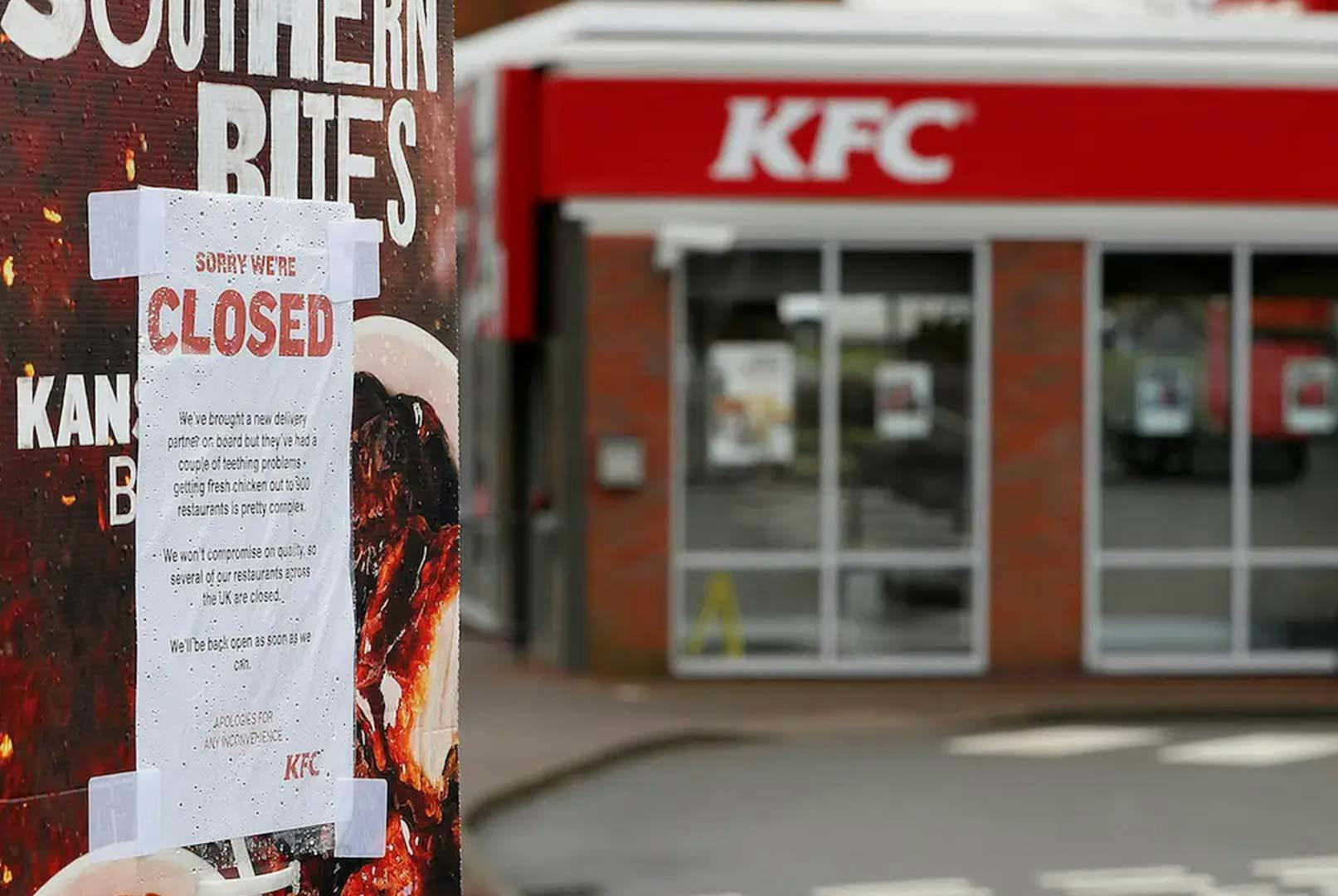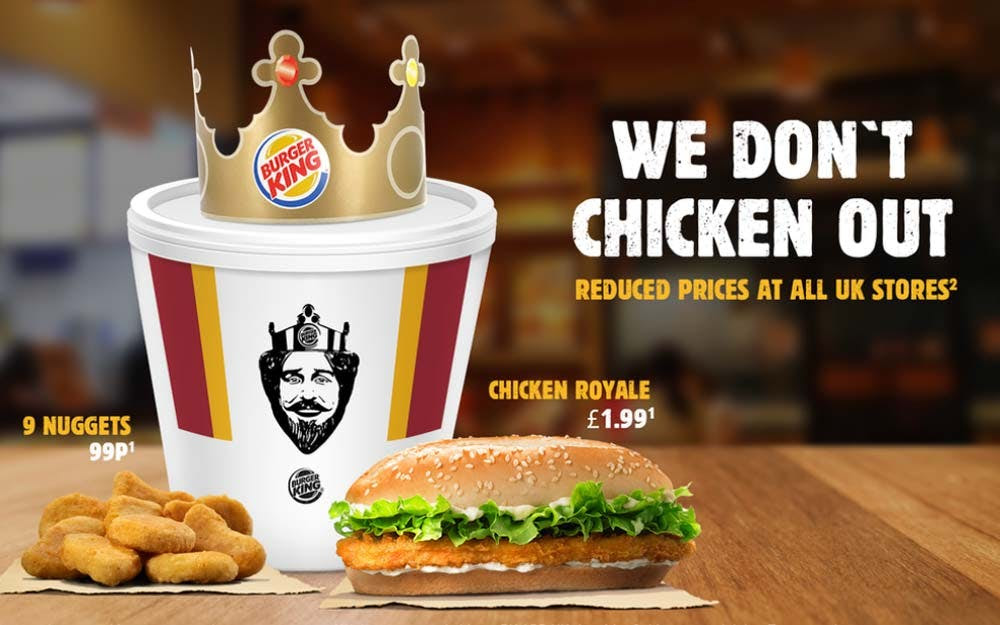In 2018, Kentucky Fried Chicken (KFC) faced an unexpected crisis in the UK when they switched chicken suppliers. Unfortunately, the new supplier wasn’t able to deliver on time, leading to an unprecedented week-long closure of all KFC stores in the country. KFC lovers were disappointed, and the brand was embarrassed.

But KFC didn’t just hide from their customers, hoping the embarrassing moment would pass. Instead they seized and opportunity to reconnect with their customers, running a clever ad featuring a chicken bucket with “FCK” instead of “KFC.” This bold move wasn’t just an ad—it was an apology with a drop of humor at their own expense, and it worked to re-endear the brand to its loyal fan base.

My favorite part of this whole story isn’t what KFC did (although I think it was genius), it’s what Burger King did to seize the moment. Burger King’s rebuttal ad, “We Don’t Chicken Out” was perhaps even more clever than KFC’s “FCK” ad.

Bravo, Burger King! This is reactive marketing at its finest. Reactive marketing involves creating an ad or marketing message tied to a current event. They can be funny, or serious, or somewhere in between but their main goal is to get buzz and leverage a “moment” in time.
As a brand, it’s important to watch for opportunities like this. When a relevant trend or news story breaks, consider how you can use reactive marketing to join the conversation and engage your customers in a fresh, creative way.
And look for opportunities to pitch “reactive marketing” to your clients. It is an amazing upsell! “Hey Sally, I’m sure you saw the news about _____________. We have a great idea for a reactive marketing ad for your business. Could we jump on a call and discuss?” (Be sure you actually have an idea ready before you pitch it.)












